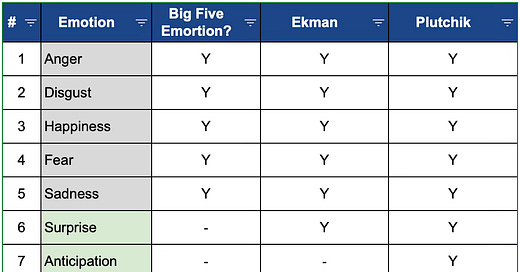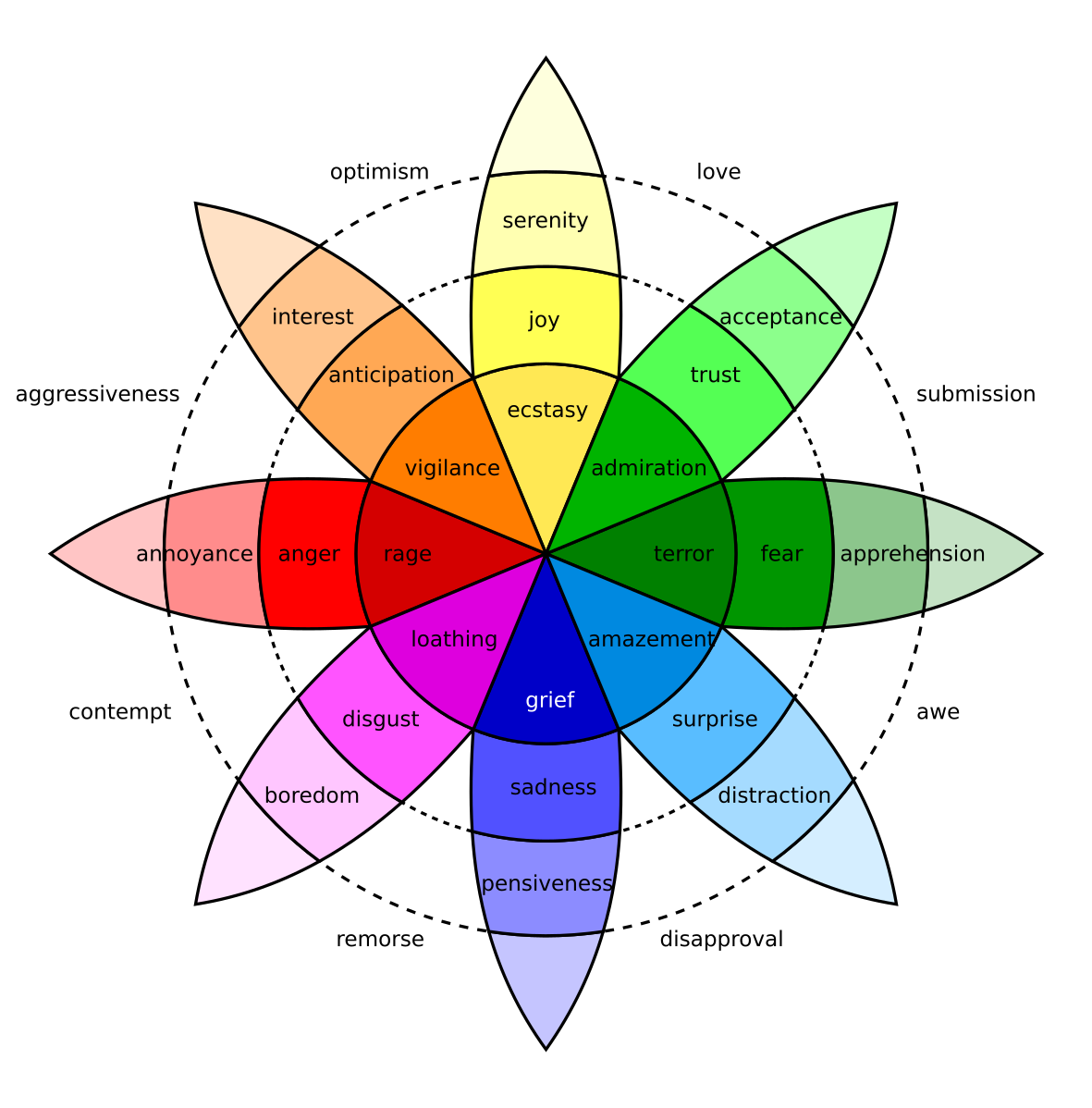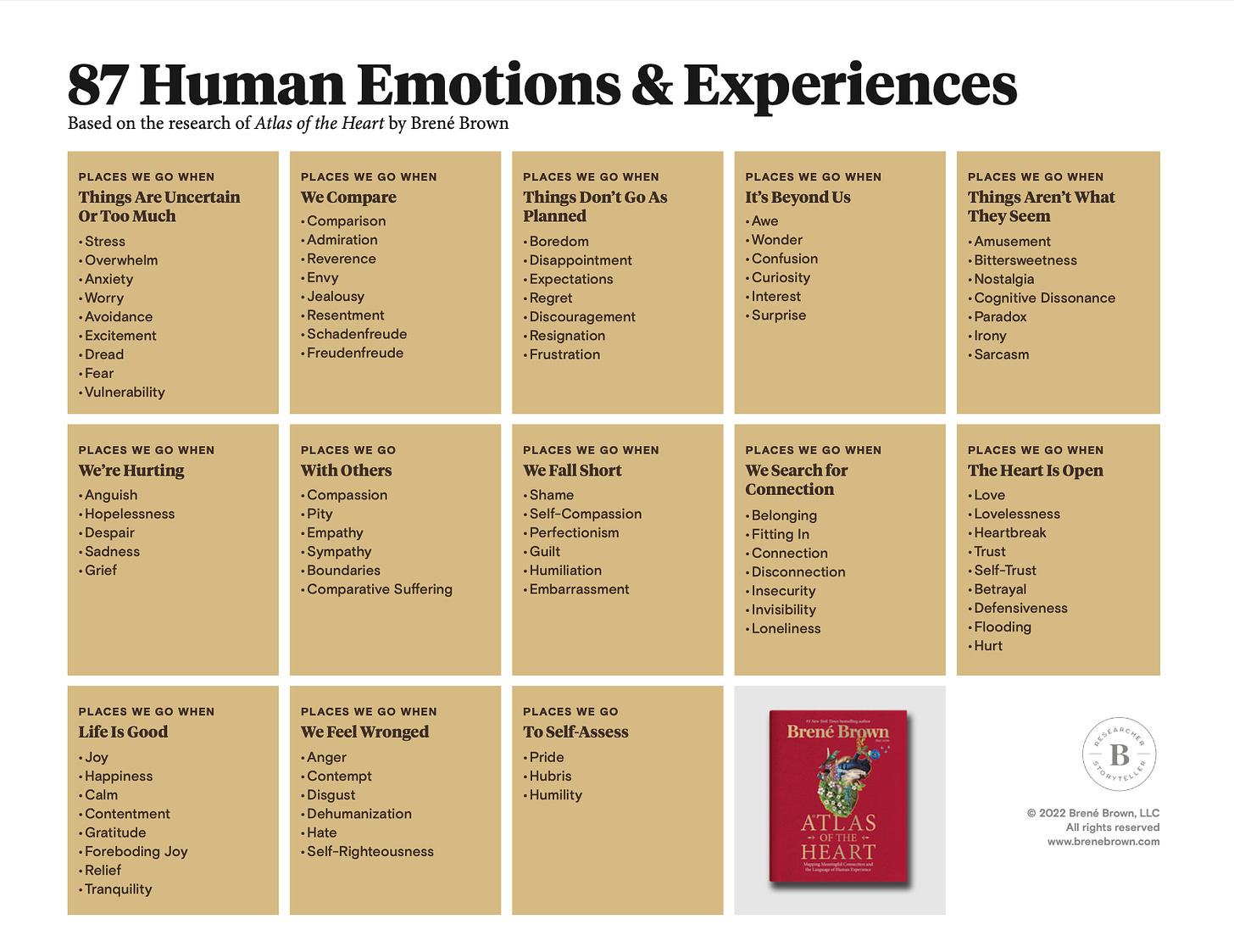SPOILER ALERT!!: This post contains spoilers on the movies “Inside Out” and “Inside Out 2”. Proceed at your own risk.
Recently I watched Inside Out 2 with my family. It’s safe to say I’m a fan. My entire crew loved the movie, especially my three daughters ages 10, 8, & 4. I’m not ashamed to admit that it got me (and my wife) a little teary eyed. Perhaps the reason for the connection that many had to this movie is because it’s just so relatable. Everyone experiences the chaos of various emotions “at the controls”. The movie allows us to to reflect on similar times we all have been in similar emotional experiences to the ones Riley goes through.
The movie is also extremely valuable to parents of small children. I know speaking from personal experience I’ve already used the movie multiple times already. I’ll ask my kids, “Okay, who's at the controls right now?” Their answer, “the purple guy” (or some other character). I think it helps them identify and label their own emotions, which is just so useful on so many levels.
As I started thinking about the movie, I started with a simple question. “I wonder what’s in store for a sequel (i.e. Inside Out III)? What emotions would they use?”
As I dug into the psychology research I realized just how deep the rabbit hole goes. As I read the research as soon as one question was answered, three more were created. But first, let me first give you an answer to my initial question, “What are the potential emotions they might use in Inside Out 3?” The answer, based on scientific research, would be:
Surprise - Experienced when something unexpected happens. It can interrupt current activity, triggering heightened awareness and attention to the new information.
Anticipation - The emotion of looking forward to a future event, which can be positive or negative. It plays a crucial role in motivation and preparation for what is coming.
Trust - An emotion that involves the belief in the reliability, truth, ability, or strength of someone or something. Trust is fundamental to social interactions and relationships.
Contempt - A feeling that a person or a matter is beneath consideration or deserving of scorn. Contempt often involves a mixture of disgust and anger. [This last emotion has differing opinions as to whether it is a ‘core emotion’]
How did I arrive at these answers? Well, of course, I used the basic search engines: Google, and yes ChatGPT. I asked about the top research theories in emotions and I first came across these 4 points of views. A warning, I’m no scientist; so I may be leaving out some key theories, but these were the ones that the internet seemed to raise to the highest ranks.
Universal “Big Five” - Coined as “Largely agreed upon by researchers.” by the Centre for Clinical Psychology
Paul Ekman - A consultant for the movie, heavily influenced the development of the film
Robert Plutchik - Developed an “emotional Wheel”
You can see there is considerable overlap on the first five emotions. However, the next 4 emotions are not agreed upon by all three views. Contempt is an emotion Ekman believes is a primary emotion, while Plutchik would call contempt a combination of Anger and Anticipation. On this chart there are 8 (or 9) total emotions that are considered ‘primary emotions’. Later we’ll talk about Brené Brown, who would likely add many more emotions. My guess is these emotions are not entirely agreed upon by the scientific community.
What is clear is that the creators of Inside Out (the original) were right to focus on the “Big Five” as the core characters for the first movie. However, what about the characters of Inside Out 2? If you’ve seen the movie you’ll see that none of these 4 emotions are in the movie.
Instead, Inside Out II focused on these emotions. With definitions from Meriam Webster
Anxiety - an abnormal and overwhelming sense of apprehension and fear often marked by physical signs, doubt concerning the reality and nature of the threat, and by self-doubt about one's capacity to cope with it
Envy - painful or resentful awareness of an advantage enjoyed by another joined with a desire to possess the same advantage
Embarrassment - A feeling or showing a state of self-conscious confusion and distress or a disturbance of mind
Ennui - a feeling of weariness and dissatisfaction. Boredom.
It begs the next question, “Why didn’t the writers include these emotions in either the original or the sequel?”
It’s hard to know what might have been in the minds of the creators of the movies. It could be that since there is some disagreement about the next 4 (or 5) emotions, that the creators felt they had a bit of leeway to explore lesser known emotion. It could also be that some of the “core emotions” are perhaps not as widely identified in the public. I don’t think I would have identified Surprise, Trust, and Anticipation as a core emotion. Or perhaps the creators wanted to focus on emotions relevant to young teens. Certainly the chosen emotions for the sequel fit with emotions commonly attributed to teens.
However, according to Ekman and Plutchnik these emotions are not primary emotions, rather they are combinations of the primary emotions. To pull from Plutchnik specifically, here are the various emotions and their components:
Anxiety = Anticipation + Fear
Envy = Anger + Sadness
Ennui = Disgust (in a less intense form)
Embarrassment = Fear + Sadness
Ennui (according to Plutchnik) is really a less intense form of disgust. Here is a visual that helps explain the concept. Although it’s not explicitly stated below, ennui here is probably best represented as “boredom”. On the wheel below it’s located in the pink category.
From Plutchnik’s research I learned that really there are multiple emotions that can be attributed to the “disgust” character. Disgust is a sort of category, and the intensity with which you feel the emotion alters the words we would attribute to them. It would be interesting to see this play out in the movie. I could envision the disgust character changing in size or stature according to some meter on the control board. It’s fun to think about.
You can also see from this emotional wheel that certain emotions live at the intersection of two emotional categories. For example, love is the combination of Joy and Trust. Can you imagine how this may have played out in the move? A new character called trust enters, full of optimism and acceptance to all. It gets together with its favorite buddy Joy, and together they have the most beautiful child, “Love”. And at the same time Anger and Disgust get together and have an offspring called “Contempt”. It’s not hard to imagine a new plot line here. The possibilities are endless!
But what would it take to make this plot line? They would need to roll back the emotions from Inside Out 2, and they would need to re-introduce the “core 8” emotions, adding Trust, Anticipation and Surprise.
Another concept in Plutchik’s research is the idea that some of the emotions operate as opposites of one another. In the picture above you can see that by examining any emotion, at the opposite side is the emotions counterpart. This too could have been an interesting dynamic to explore in the movie. In fact, I think the original Inside Out did just that, with Joy and Sadness in a battle over Riley’s state of mind. I could imagine similar dynamics in future movies between say, Fear and Anger, or between Disgust and a newly introduced character Trust.
Of course, in reality it’s too late for Pixar to go down this path, but it’s a fun thought exercise. I did some basic research on Ekman, who was a consultant on both movies. Here is a link to a presentation he has on the original Inside Out. It is loaded with some great examples of psychology concepts that got embedded in the movie. In fact, a potentially future post might be “How many psychology theories are represented in both movies?” Here are a few from my own observations:
a) core memories are tinted by emotion
b) bottling up and suppressing emotions doesn’t work
c) emotions create beliefs, beliefs make sup the sense of self
Toward the end of my research I also came across Brené Brown’s research, who is a self described “researcher, storyteller who studies courage, vulnerability, shame, and empathy”. Perhaps Brown would add these emotions (courage, vulnerability, & shame) as core emotions? I’m not sure. I just ordered Brown’s book “Atlas of the Heart”. Perhaps a future post. Based on what I know of Brown’s work, I think she groups the emotions more by function. In Atlas of the Heart she discusses 87 different emotions, and groups them in 13 categories of “When we are feeling…”. Some of these 13 categories seem to map well to the other “groups” from Pultchnik or Ekman. For example hurting (Brown’s term) could be mapped to sadness (Ekman and Pultchnik’s group). But other categories Brown uses like “self-assessing” is harder for me at least to map to an emotion Ekman or Pultchnik might use. What is clear though is with 87 total emotions, Brené Brown wants to equip her readers with a awareness of the various emotions we experience and provide us with an increased awareness of when we are feeling those emotions.
So perhaps there are more emotions than 8, or 9, or 13, or even 87. What I have learned is that our emotional world is much more complex than I had ever really thought. For me personally, I have found that for as much time as I spend immersed in emotions I don’t know that much about them. It would behoove me to learn more, if nothing else than to try and recognize, “who is at the control center?”
My wife and I also decided that we want to equip our children with this emotional awareness. So we purchased an “emotional wheel” (like this one). We have put this wheel up on our refrigerator with the idea that each member of the family will have their own magnet and each day we’ll place the magnet on the wheel we are feeling. This will help us know each other’s emotion state, but also to know our own state. Speaking personally, perhaps once I can become more emotionally self-aware I can then do what Riley did at the end of Inside Out 2, and request Joy to come to the controls more often.
For more information check out these links and references:
References
My Personal emotion research Organizer
https://docs.google.com/spreadsheets/d/1zid72NHFDy2hPc3KgzSqm3LFoLU9FQHCZraOrvhwU8A/edit?usp=sharing
Basic Emotions
Paul Ekman
Atlas of Emotions: http://atlasofemotions.org/#actions/
Robert Plutchik
PyPlutchik: Visualising and comparing emotion-annotated corpora
Putting Some Emotion into Your Design – Plutchik’s Wheel of Emotions
What Are Basic Emotions?: Emotions such as fear and anger are hardwired.
Emotional Wheel
Brené Brown
Brené Brown’s webpage: https://brenebrown.com/hubs/atlas-hub/
(See Brown’s HBO Series Atlas of the Heart at the link above)
Etsy Emotional Wheel - (based on Brené Brown’s research)
https://www.etsy.com/listing/1485248410/atlas-of-the-heart-feelings-wheel







This is excellent intellectual food for thought! I'm glad to read your insights and see what was on your mind after watching a movie. I can't wait to see the 2nd Inside Out and I love that you took some steps in your family circle to implement what you learned from the movie!
Great post! I enjoyed the insight you brought to the idea of “core emotions” and how the Inside Out movies could have played out differently with different core emotions (or more included!)